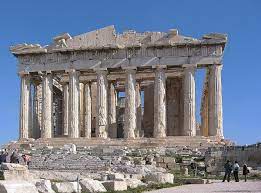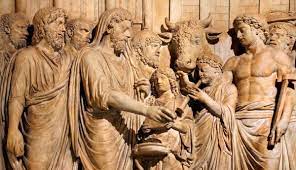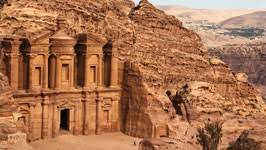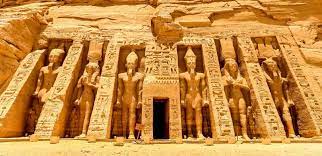

Romans in antiquity
Explore Tours
Mons Claudianus is the greatest city built by the Romans in antiquity.
Through the desert among the rocky mountains and from it to the ancient Roman road to reach the “Mons Claudianus”, which is high in the mountains of the eastern desert and is one of the 6 Roman cities in Hurghada and the most charming, with red marble, which the Roman emperors considered the most beautiful and that it is preserved in this city for their palaces and temples. Nile, and then down the Nile to finally be sent to Rome.
It is located in the um Hussein district, 70 km west of Hurghada, where explorers, adventurers, and foreign scholars come to the city on purposeful visits without being on their tourist map to explore Claudian.
He explained that researchers confirmed that the pharaohs were the first to use the um Hussein area as a quarry to extract “granite” for the construction of temples, then the Romans found out about it and started working on it 50 years BC and after 150 years it remained, meaning they existed for about 200 years.
The Romans were the first to build a city in quarries inhabited by families and began to build villages and dwellings for workers, saying, “Explorers informed me that the Roman state at that time was a great state, and they were the first to start building. building cities in these places and quarrying granite and cutting marble was very expensive, but the state Romans were able to do it because at that time they were secretive and wealthy, like any great country now, and they received requests to buy marble from all over the world, and researchers confirmed that the city is a testament to the precision and organization of the Roman Empire.
The Romans built 6 Roman cities in Hurghada to cut and quarry marble, all of which have disappeared, including um Sidra, Budaya, um Balad and Al-Gaza, as well as Mons Claudian, which is the largest.
Description of the city:
Foreign explorers told me that the city of Mons Claudian was a Roman quarry in the eastern desert of Egypt that was run by the Roman army, and the quarries were skilled civilian labor and were so well-paid and high-paying that one researcher described their quarry lifestyle as luxurious.
Today we can see fragments of granite, many artifacts and columns, several pools, several texts written on pottery and broken stones, and one was stolen two months ago because there are no guards in this place.
The largest columns reach 20 meters in length, 2.5 meters in diameter and weigh about 200 tons. Many of the buildings have been preserved to the ceiling. The city walls and towers have been preserved. They housed about 1,000 guards, as well as the homes of Roman workers. It was built of granite, and round wells filled with mineral water, and there is still a well.
The ruins of the city are still clearly visible, while the houses are connected by narrow alleys of a 70-square-meter wall, behind this wall is a villa for the ruler or official, which is different from the rest of the houses, in addition to an unfinished temple and stables to house up to 400 head of bulls and its own feed project, water tank and land use.
Colonna’s Journey to Rome:
Foreign explorers have recounted how the columns travel across the rocky mountains from Mons Claudian to Rome, saying that because of the weight of the columns, which are 20 meters long, 2.5 meters in diameter and weigh about 200 tons, they were loaded onto carts consisting of 12-person wheels pulling up to 40 heads of bulls.
Foreign researchers said: “The journey of the columns to Rome begins with the quarries of ‘Mons Claudian’ in the Nile Valley, the city of ‘present-day Cena’, after extracting them by digging longitudinal piles inside the mountain. Wooden planks are placed in them and then water is applied until they swell and the posts separate from the afterlife and be. Then they dig it up with a help and put it on the cob.
There are several stations along the road, the journey from one station to another lasts more than 7 days, which indicates that the road stations are similar to forts and have stables for horses, as well as supplies of water and food. Donkeys and oxen were used to transport food. And the water that people need between road stations was also used to tow carts and camels. To communicate and transport food and water for workers and oxen, convoys are transported over a distance of more than 140 km from the quarry to the river and then to the ships. cross the Mediterranean Sea and then reach the Roman ports.
Al Basha Well and Gold Mine:
It is 3 km from Mons Claudian, the “Bir el-Basha” well, with an estimated daily production of 45 tons of mineral water.
The source of this well is Roman, then it was discovered and built by the British, and it is now in the possession of the “al-Maazi” tribe, the Arab al-Hashman (Salama tribe).
On Mount Abu Kharif, next to Mons Claudian, there is also a gold mine and caves dating back to the time of the pharaohs and then the Romans, until the British discovered them optimally.
Inside the Golden Cave, there are stairs and several cement buildings built by the British, as well as fossilized plants that are millions of years old.
The theft of his precious archaeological inscriptions and the tombs of the dead:
During the travels of foreign researchers and archaeologists from Italy, the Czech Republic, several Roman coins of three different objects were found in the sand, including iron coins, copper coins and bronze coins of three different sizes, small, medium and large, and Hungary, who came to explore “Mons Claudian”.
The ancient city and the governorship of the Red Sea will benefit from tickets to visit and others.
Included/Exclude
Tour Plan
Related Tours
Review Scores
Booking Tour
Tour Information
Max Guests
Min Age
Tour Location
Languages Support





